Greetings everybody,
Although The Sewing Machine Newsletter has been in existence for over a year, with more than 60 articles published so far, somehow we’ve yet to cover the topic of balancing stitch tension. That is the subject matter I aim to tackle today.
I hope you find it helpful.
-Cale
What do we mean when we say the tension is unbalanced?
A sewing machine uses two sources of thread to make a stitch:
Needle thread (upper thread)
Bobbin thread (lower thread)
When a machine makes a stitch, it is essentially tying a knot between the needle thread and the bobbin thread. That knot holds together the fabric we are sewing.
When the tension is balanced, the knot sits in between the multiple layers of fabric that we are sewing.
When the tension is unbalanced, the knot pokes out to one side of the fabric or the other. In such cases, you might perceive the stitch as “loose” or “bumpy” or that the thread can easily be pulled out.
How to Balance Tension
The thread that goes through your needle (upper thread) begins at the spool and passes between the machine’s upper tension discs.
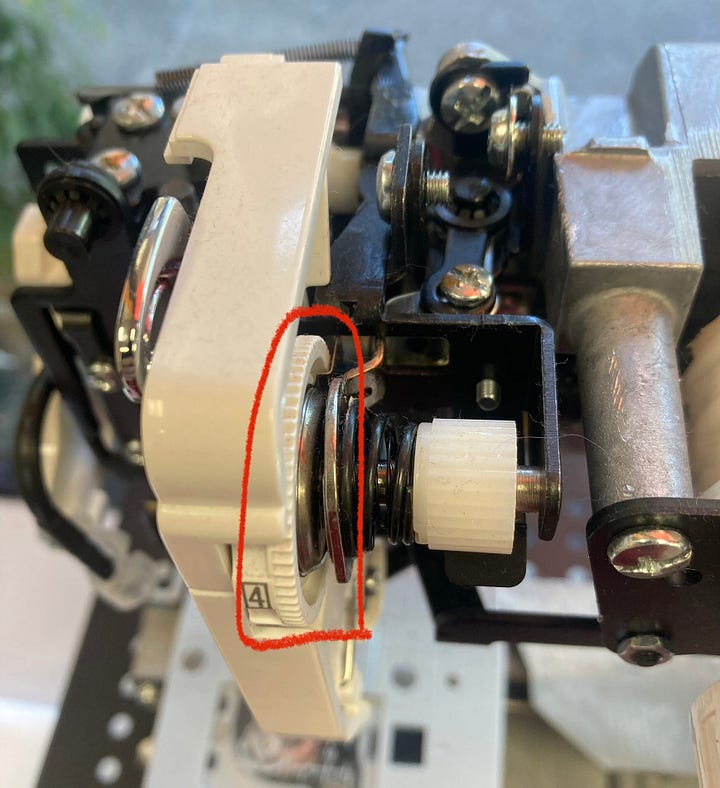
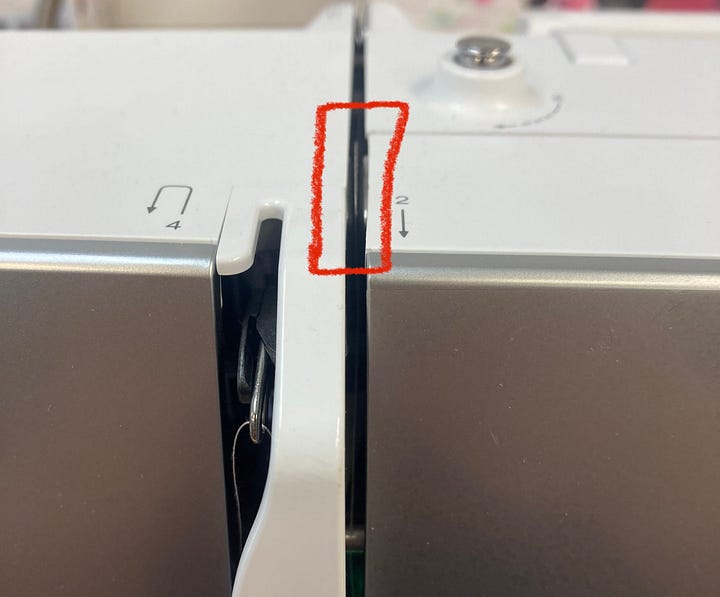

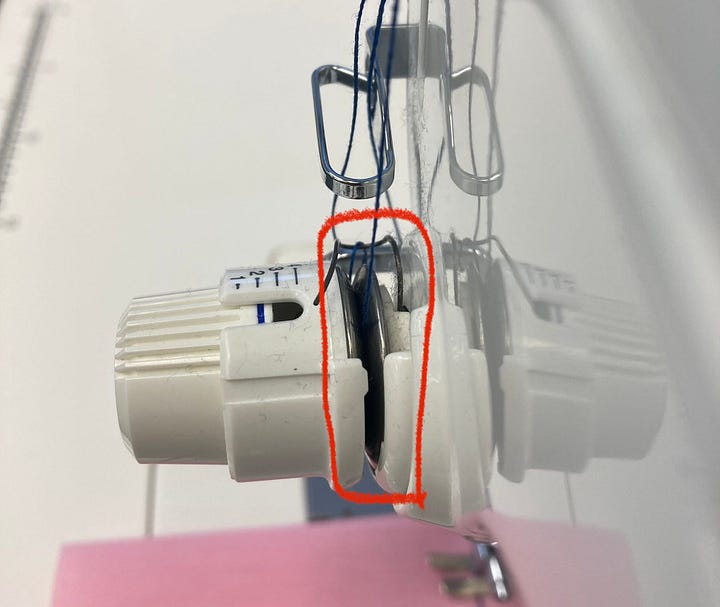
Meanwhile, your bobbin thread passes between the bobbin case tension discs.
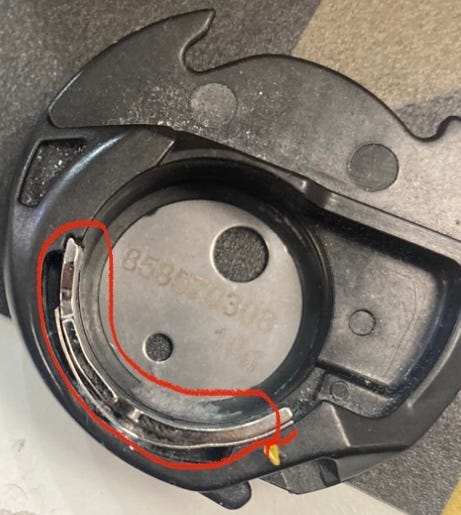
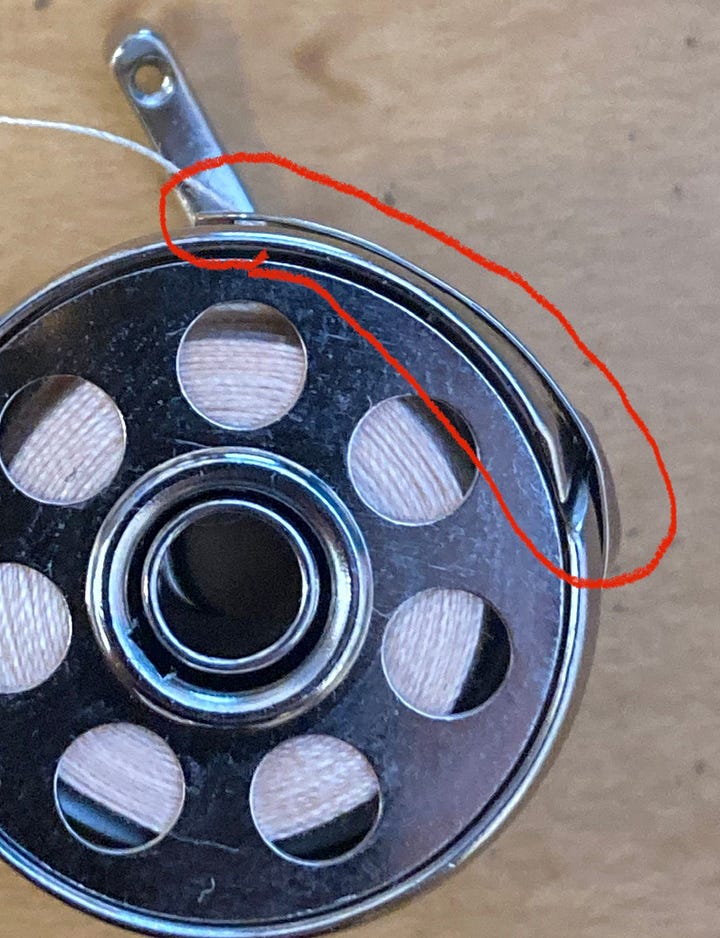
While you have the ability to adjust both upper tension and bobbin tension, I highly recommend that you only adjust the upper tension discs when balancing the machine’s tension. The bobbin case tension can only be adjusted by turning a very small screw that is extremely sensitive and difficult to calibrate. Meanwhile, the upper thread tension dial is highly accessible to the user, numbered 1 through 10 with 1 being very light tension and 10 being very tight tension.
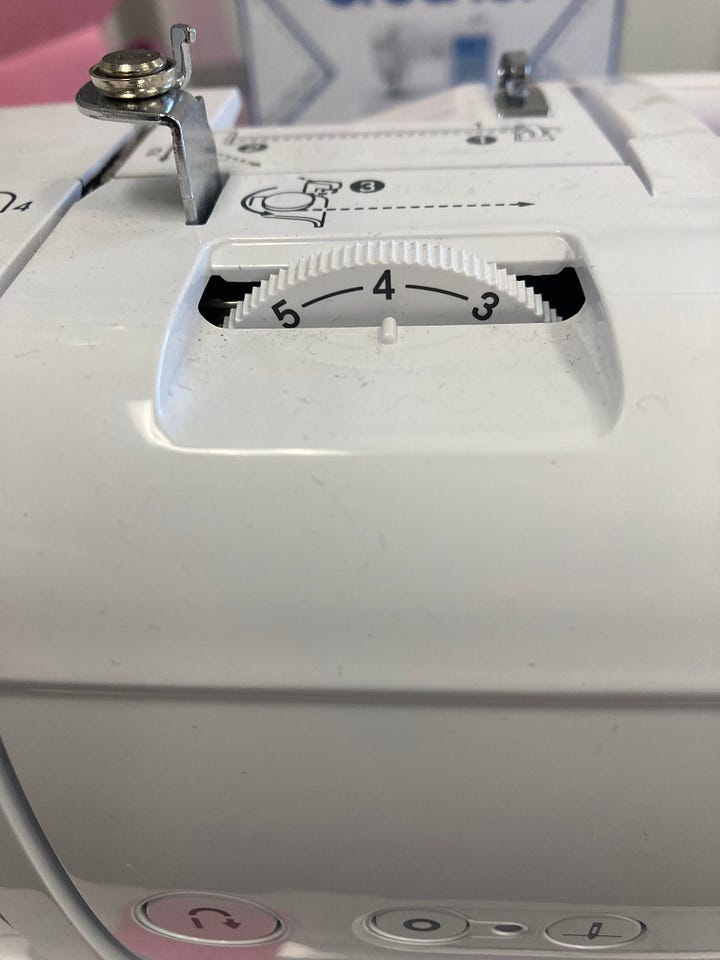
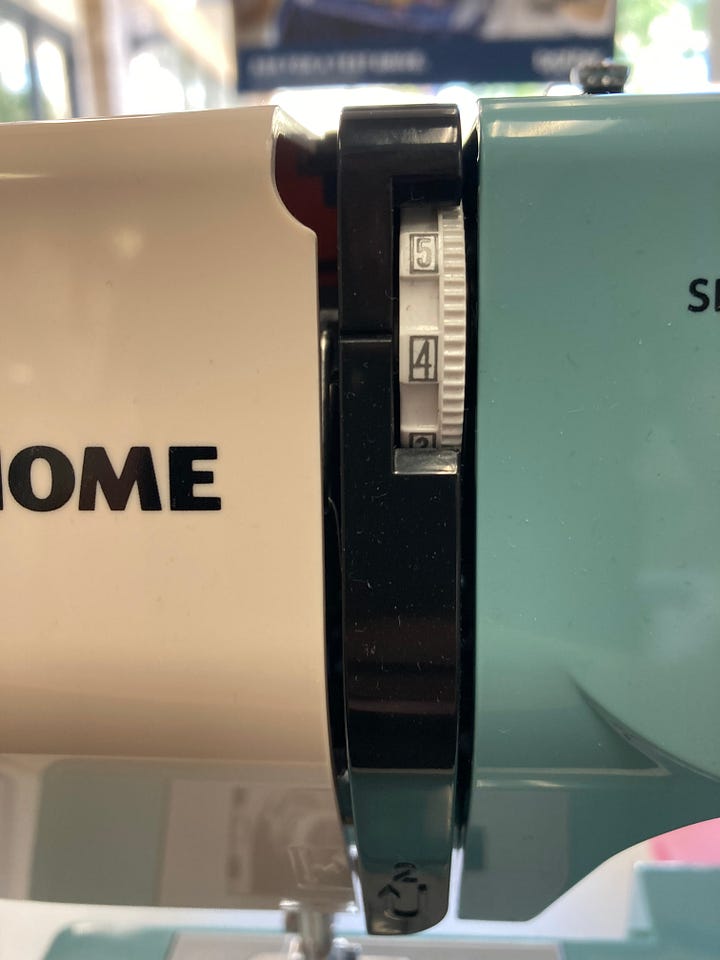
Think of tension as a tug-of-war between the needle thread and bobbin thread. And remember, our goal is for the knot to sit in between the fabric.
If the knot is poking out the topside of the fabric, that means the upper tension is overpowering our lower tension. In that case, decrease the top tension (e.g. turn upper tension dial from 4 to 3) so that the bobbin case tension can better pull the knot down in between the fabric.
If the knot is poking out the underside of the fabric, that means the bobbin tension is overpowering the top tension. In this case, you want to increase the upper tension (e.g. turn upper tension dial from 4 to 5) so that the upper thread tension pulls the knot back up between our fabric.
Patience is key. Balancing tension will require some trial and error— sew a seam, see where the knot sits, and adjust the tension accordingly. Don’t be afraid to use the full spectrum of your upper tension dial.
“Automatic Tension”
Many modern machines tout “automatic tension” as a feature.
If a machine has “automatic tension”, it means the upper tension discs automatically adjusts based on the stitch pattern that the user has selected. For example, your straight stitch tension will be set automatically at 4, but your zig-zag tension is automatically set 3.
These changes in tension are based on research from the manufacturers’ research and development teams. Essentially, they have programmed an educated guess as to what they judge to be the ideal general top tension on straight stitch vs zig-zag vs decorative, etc.
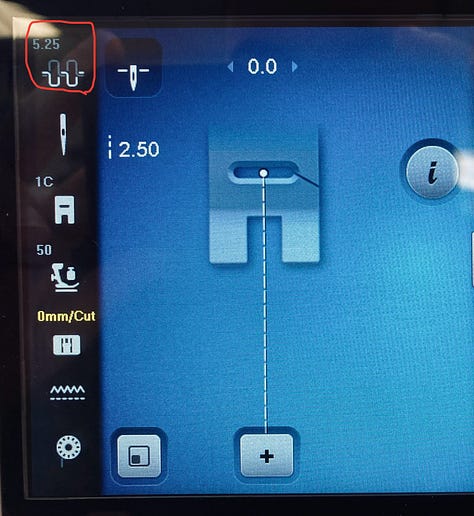
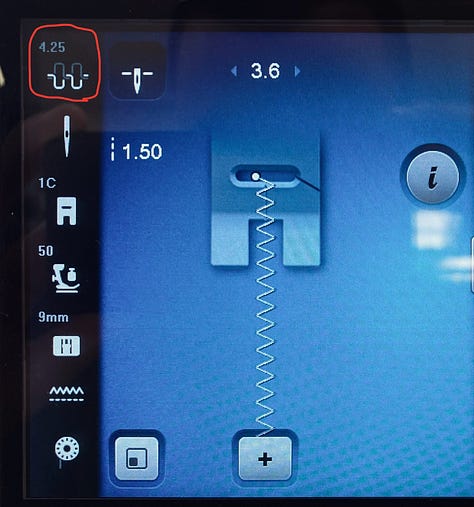

While I like the feature in itself, I am not a fan of the term “automatic tension” because I think it is misleading. “Automatic tension” does not actively adjust tension based on the stitch quality of the machine. It does not “feel” the thread between the discs and adjust automatically, nor does it “feel” the thickness of the fabric.
If you have a machine with “automatic tension”, but your tension is unbalanced, I recommend you set the upper tension to 4 and sew a straight stitch to see where the knot sits, then go through the tug-of-war tension re-calibration process I described earlier.
One Last Note. . . .
The upper tension dial goes all the way down to zero and all the way up to ten. Typically, you should be able to achieve balanced tension with the dial set between 3 and 6, but there may be the rare occasion where you have to go all the way up or all the way down in order to achieve a quality stitch.
In my opinion, when balancing tension at home, you shouldn’t be afraid to go down to 0/1/2 or up to 8/9/10. That 0-10 range is there for a reason— to get you through the day when there is something wrong with the machine. It’s okay to go to the edges of that 0-10 range if need be; however, if you find yourself on the edges, know that there is something wrong with the machine and at some point in the near future you ought to bring it to a technician to get the problem figured out.
Thank you for reading.
If you want to learn more about stitch quality and how to troubleshoot from home, I suggest you keep the following 3 companion articles in your back pocket:
The Pull Test - the common cure for looping on the underside of fabric
The Necessity of Threading Your Take-up Lever - the reason thread nests on the underside of fabric
Compacted Lint & Shredded Thread - key areas of your machine that you can clean out at home





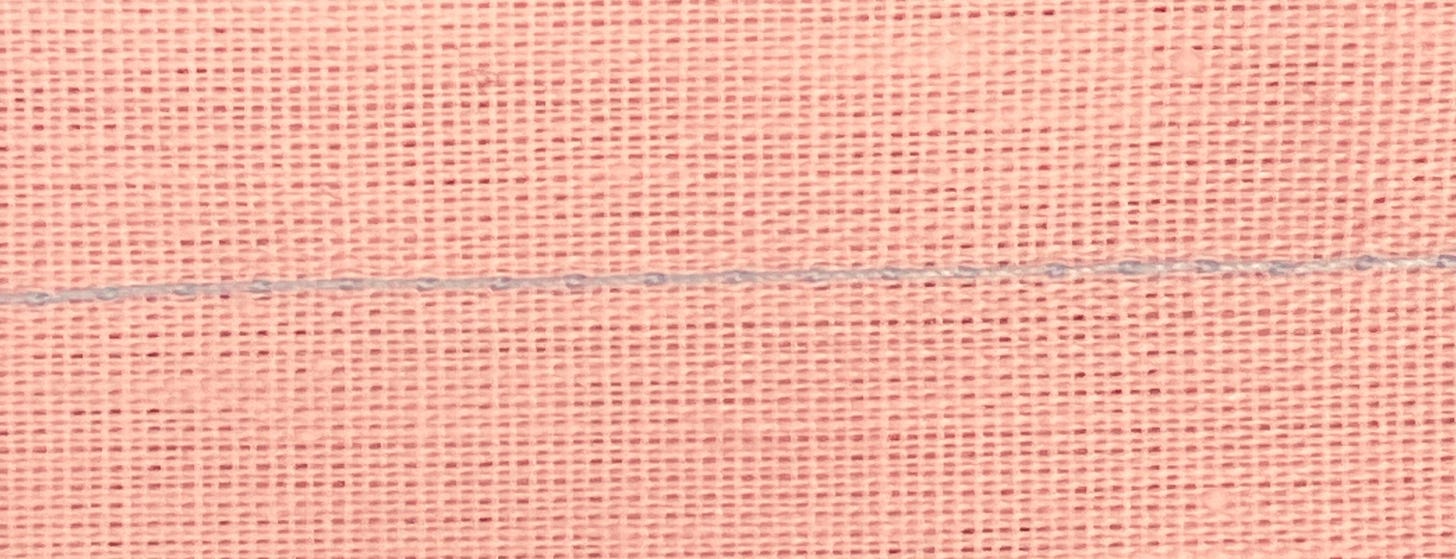
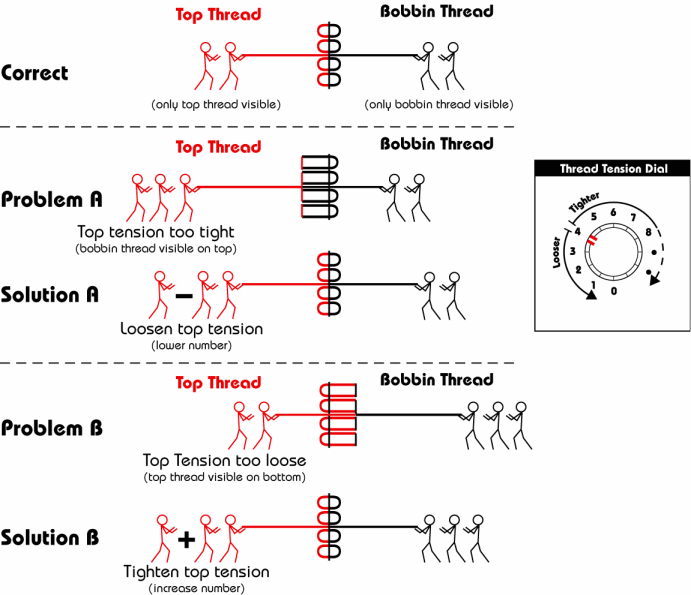
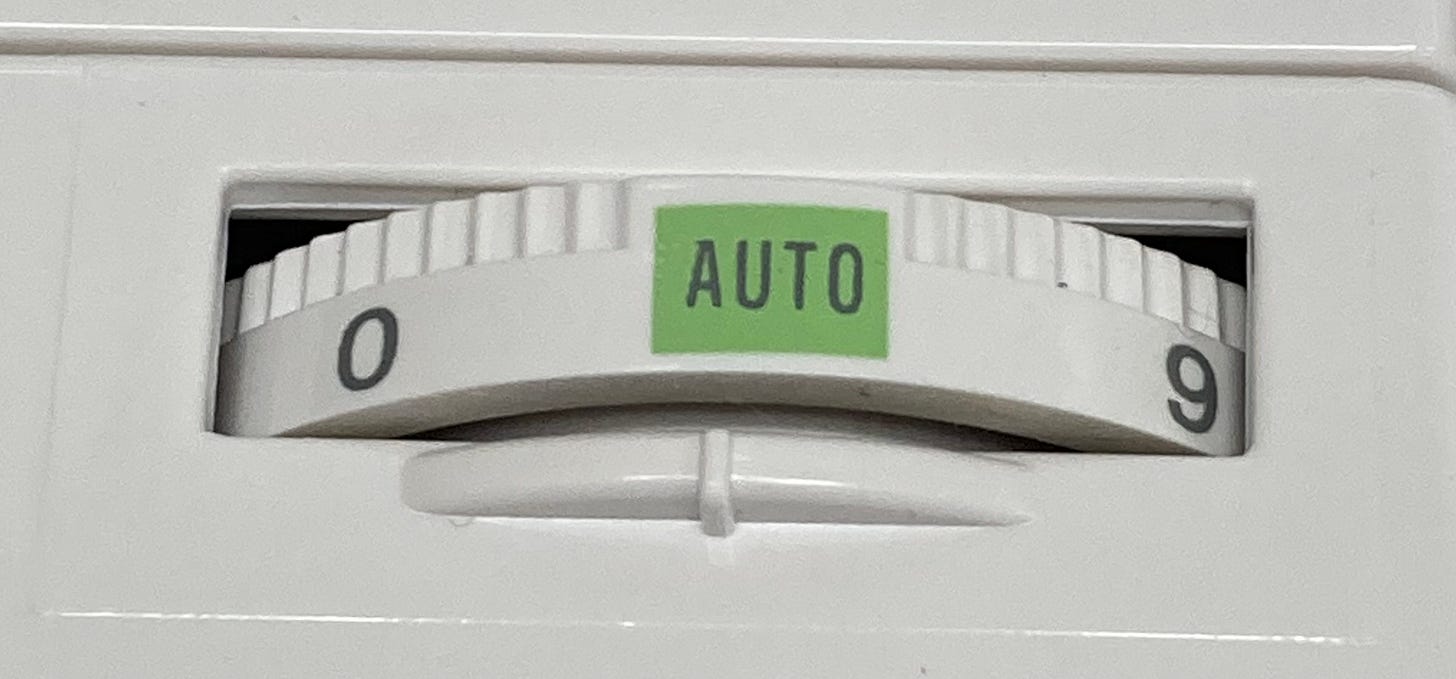
Thank you
I can always tell when my tension is unbalanced, but I can never remember which way to adjust the upper tension number. Your article has made that very clear: if it’s on the top it needs to go down, if it’s on the bottom it needs to come up; so I can use that as a way to remember which way to turn my dial. Thank you!